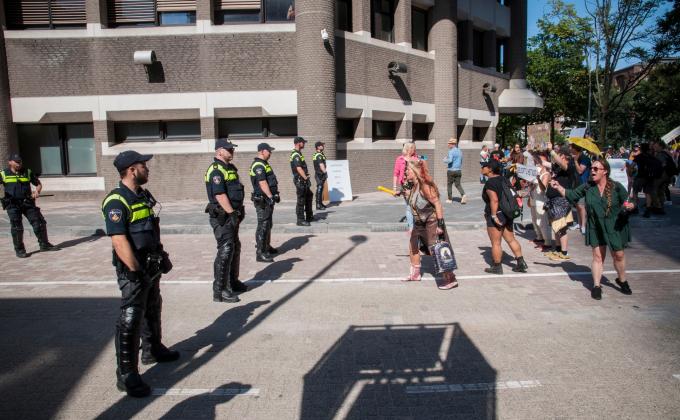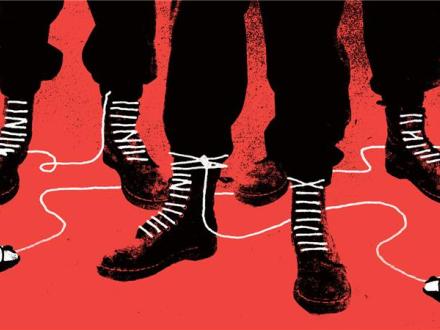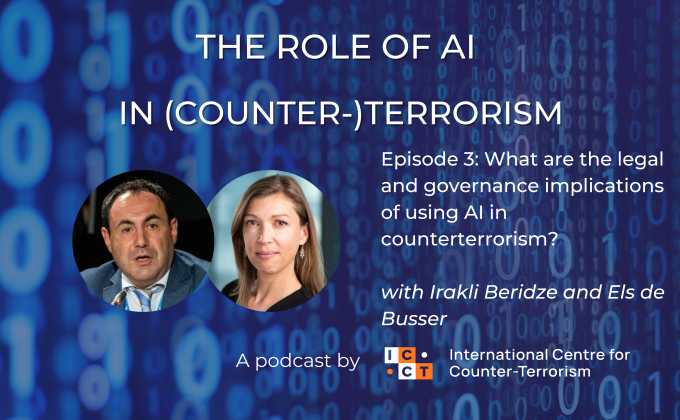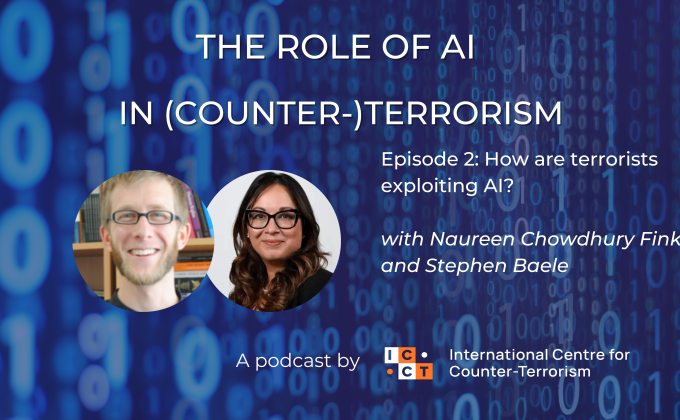Sergey Nechayev is probably one of the few people who was criticised by both Fyodor Dostoyevsky and Karl Marx. Known at the time for his ruthlessness and his relentless scheming in the Russian anarchist movement, he drew the attention of the great novelist, who based his character Pyotr Verkhovensky in Demons on him. Being the moralist that he was, Dostoyevsky used Nechayev to exemplify the dangers of political fanaticism. As for Karl Marx, he feared that Nechayev’s trickery would end up harming the worker’s movement. The arch father of communism spilt quite some ink to distance himself and his International Workingmen’s Association from Nechayev, whose penchant for violence brought Marx to mockingly call him a “pan-destroyer”. Such was Nechayev’s notoriety that even today his name still comes up in the literature on terrorism, usually to illustrate how ruthless terrorists really are.
But while Nechayev’s reputation seems to have survived the passage of time, it does appear that we are today much less afraid of the movement he was a part of. Obviously, jihadist terrorism and, increasingly, right-wing extremism have drawn lots of attention from practitioners and researchers alike, but left-wing extremism, of which Nechayev’s type of anarchism is a part, has been examined much less extensively. Much of the recent research about left-wing extremism is either about the left-wing terrorist groups from the twentieth century or about the Naxalist insurgency in India.
Recently, however, there have been concerns among some government actors that perhaps we should take more note of what is happening in the left-wing extremist movement. For instance, in a position paper distributed in late June 2021, the EU Counter-Terrorism Coordinator quoted two EU threat assessments as saying that “[t]he threat stemming from violent left-wing and anarchist extremism (VLWAE) is still considered low but increasing, due to the fact that more Member States have been affected in 2020.” This paper was the basis for a discussion of the Working Party on Terrorism in early July. At that same meeting, a Europol representative gave a presentation in which they said “[t]he threat deriving from Violent Left Wing & Anarchist Extremism at EU level can be described as increasing and evolving”. The presenter also called on stakeholders to issue more information to get to a better assessment of the threat.
So have we been ignoring something problematic? Should we indeed pay more attention to left-wing extremism? The answer to these questions lies in the actual violence left-wing extremists engage in, as well as in the extent to which violence is currently acceptable to those on the far-left. In this perspective I will go into both of these aspects. In doing so, I will focus on the leftist strands that are today most likely to pose violent threats, i.e. anarchism and the Antifa movement (which, of course, clearly overlap). I will also address the question whether non-violent left-wing extremism is a problem in the same way non-violent right-wing extremism is. As the concerns mentioned above pertain mostly to the West, this will also be the focus of the piece.
Intelligence assessments
A first way to assess the threat emanating from left-wing extremism in the West could be to look at the intelligence assessments from various European security services. Are they noticing anything alarming? The German Federal Office for the Protection of the Constitution (Bundesamt für Verfassungsschutz, BfV) definitely does. In its most recent Verfassungsschutzbericht (Report on the Protection of the Constitution), it notes that in 2020, left-wing extremists committed a record number of 6,632 crimes, of which 1,237 were violent. The BfV has seen a small number of cells that are detaching themselves from the broader far-left movement and are increasingly willing to use violence. Moreover, their violence is directed more and more against people rather than against symbolic targets like buildings or vehicles.
But while alarming, it is far from clear that the hardening of the left-wing extremist ‘direct actions’ in Germany is part of an international trend. The Swiss Federal Intelligence Service has reported some left-wing extremist arson attacks, but their counterparts in several other countries seem much less concerned. The official national-level threat assessments for Norway, Denmark, Sweden and the Netherlands are all very clear that left-wing extremism in their countries is small, isolated and fragmented, and has little potential to pose a violent threat. Interestingly, the Dutch General Intelligence and Security Service (Algemene Inlichtingen- en Veiligheidsdienst, AIVD) notes a trend away from actions directed against individuals and towards objects with some symbolic value. And even Italy, a country with a history of militant anarchism, has not seen disconcerting levels of anarchist violence. True, in its 2020 report to parliament, the Italian intelligence community mentions insurrectionary anarchism as an important subversive threat, but it reports nine arsons and twelve instances of vandalism, hardly overwhelming numbers for a country with more than 60 million people. Outside of Europe, the Australian Security Intelligence Organisation mentions that it also looks at left-wing extremism, but that it is more concerned about right-wing extremism.
Terrorist attacks
Another way to get some insight into the left-wing extremist threat is to look at the numbers. In the research for the ICCT Terrorist Threat Assessment that will be published later this year, we found that left-wing extremist terrorist attacks far outnumber attacks by jihadists and right-wing extremists, especially in Greece and Germany. Strikingly though, the number of victims is only a fraction of the number of victims of attacks by jihadists and right-wing extremists. In the data collection for the ICCT Threat Assessment we found some fifty left-wing extremist attacks in 31 mostly Western countries in the period September 2019 – August 2021; in all these attacks combined, three people were wounded. Similarly, data collected by the think tank New America show that one person has died as a result of left-wing extremist terrorism in the US since 9/11. The numbers for right-wing extremism and jihadism are 114 and 107, respectively.
These data show a clear pattern: currently, left-wing extremist terrorist attacks are small, are carried out by simple means and rarely claim any victims. Granted, it has not always been this way. Groups like the Red Army Faction and the Red Brigades have carried out many deadly attacks, especially in the 1970s and 1980s. But left-wing extremism today is a decidedly different phenomenon. This is not to trivialise the impact that such attacks may have on the individuals who find themselves on the receiving end of such acts of violence, but it is also something of a different order than jihadist suicide bombings, right-wing extremist mass shootings or the left-wing extremist attacks from the past.
Riots
So terrorist attacks may not be much of an issue, but what, then, about riots, violent demonstrations and confrontations with right-wing extremists? Perhaps the strongest argument for a stronger focus on left-wing extremism is the street violence that occurs when anarchists or Antifa activists clash with the police or with other protesters, or when protest marches degenerate into vandalism. A report from the Network Contagion Research Institute, published in 2020, points to a growing online milieu where “extreme anarcho-socialists” are using violent rhetoric (including apocalyptic ideas, dehumanising insults and martyr narratives) of the kind that one more readily associates with right-wing extremist and jihadist online fora. But more importantly, the authors of the report were able to tie calls for violence to actual riots in several US cities on 25 July 2020. Left-wing extremist Twitter accounts encouraged their followers and provided tactical information, for instance about the locations of police perimeters. This is an indication that online extremism is spilling over to the street.
Similarly, the New York Police Department’s Deputy Commissioner for Intelligence and Counterterrorism, John Miller, explained the increasingly sophisticated way anarchist rioters plan their actions, saying “organizers of certain anarchist groups set out to raise bail money and people who would be responsible to be raising bail money, they set out to recruit medics and medical teams with gear to deploy in anticipation of violent interactions with police.” Miller also points out that there are activists on bicycles who secretly scout the environment for police presence. It is unknown how widespread such practices are in the US and in the West in general. This is something that might be worth looking into, even if left-wing extremist involvement in riots is sometimes exaggerated (the FBI itself stated, in reference to last year’s unrest in the US, that “much of the violence and vandalism is perpetrated by opportunistic, individual actors acting without specific direction”).
Non-violence in far-left strategic thinking
But even if we concede that left-wing extremist street violence is a problem, the question is still whether its perpetrators will ever be more than a fringe of the broader far-left movement (which I mean here to include activists whose views may be radical, but who are not extremists). Large parts of the far-left are very critical of the use of violence as a tool to bring about political and social change.
On a tactical level, some Antifa activists are questioning the value of violent confrontations with right-wing extremists. They believe such actions are outdated against a nemesis that has adopted different, seemingly less radical methods. As one Swedish Antifa activist lamented to Mark Bray, the movement’s chronicler: “Fascists moved to other arenas and we got stuck in our ways. Violent tactics do not work on everything. (…) We needed to restructure and think of new ways to confront them, but we didn’t do that, so now we’re falling behind. They are leading the way and we are chasing after them.” Another expressed similar reservations: “With populist movements, it is hard to always justify militant strategies against them as public opinion is shifting, as the violence the far-right advocates is not clear and apparent (…). Here the classic anti-fascist strategy meets its limits.”
Others fear that violent action could become a goal in itself for those who engage in it for “a feeling of elation, a rather macho sensation of power”. Thus, they claim, it achieves nothing, except that it provokes a police response against the entire movement and that it gives the media the opportunity to portray anarchists as violent thugs without any meaningful political goals. Moreover, as violent action tends to be the work of small groups of activists, such damage to the movement is done in an undemocratic manner. In the words of a participant in the Occupy Movement: “I do think there is a kind of violence in the way property destruction affects others without their consent. A small group of people making decisions that affect the safety and reputation of the whole movement is not what democracy looks like. That is what violence looks like.”
Yet another concern is that violence leads to passivity within the broader movement. As a Danish Antifa activist explained to Bray, there is a risk that violent activists are becoming “professionals who take care of the Nazis for the rest of us. We can’t be part of them, we just call them when the Nazis come”. Many far-leftists want their movement to be an inclusive mass movement, and that is not an ambition that is easy to reconcile with an emphasis on a form of action that not everyone is willing or capable to engage in. But probably the most fundamental reason on the far-left to reject violence is that it goes against the principles that would be the basis of the kind of society they are striving for. For instance, while they make exceptions for self-defence or the defence of vulnerable groups, many anarchists point out that violence suggests domination and therefore should not have a prominent place in the repertoire of a movement that is all about liberation. To borrow a phrase that is often – but falsely – attributed to Mahatma Ghandi, they want to be the change they want to see in the world, which brings us to the concept of prefigurative politics.
Prefigurative politics
Large segments of the far-left simply believe violence is not helpful or necessary in achieving their political goals. In order to understand this, it is important to realise that they no longer stick to the notion of a revolution as a single event during which the capitalist order is overthrown and replaced by governance along anarchist principle. As the late anthropologist and anarchist activist David Graeber wrote:
“A revolution on a world scale will take a very long time. But it is also possible to recognize that it is already starting to happen. The easiest way to get our minds around it is to stop thinking about revolution as a thing — ‘the’ revolution, the great cataclysmic break — and instead ask ‘what is revolutionary action?’ We could then suggest: revolutionary action is any collective action which rejects, and therefore confronts, some form of power or domination and in doing so, reconstitutes social relations—even within the collectivity—in that light.”
For Graeber and many others on the far-left, anarchy or the abolishment of capitalism is something everyone can practice in their own lives. Living their lives in accordance with the ideal society they aspire to is called prefigurative politics. The more people that are involved in this, the more zones and spheres will be administered according to anarchist principles. Anarchism is about creating autonomy and instating collective self-governance where it is possible rather than about waging a violent struggle against the established order. Running a company in a democratic manner or even something as innocuous as guerrilla gardening is the way to go for many anarchists. Whatever one thinks of this, it is hard to see prefigurative politics of this nature as a threat to national security.
The anarchist response to the coronavirus pandemic is instructive in this regard. Some (not all!) right-wing extremists are trying to make political capital out of the Covid-19 restrictions by spinning them as dictatorial measures by out-of-control governments; especially in the US and Germany, right-wing extremist groups are dominating the Covid-19 protest movement. Their left-wing counterparts, on the other hand, have been decidedly less assertive in this respect. There is no coordinated effort on the left to mobilise people for a violent revolution now that the ruling elites seem vulnerable and popular discontent is rife. Yes, anarchists and others on the far-left are grumbling online about how the capitalist economy brought the pandemic upon us, but instead of taking up arms against it, they set up solidarity networks to provide material support to those who need it.
Left-wing extremist meta-politics?
But what, then, about the spread of left-wing extremist ideas? Elsewhere, I have argued that it would be a mistake to view right-wing extremism only as a violent threat. Right-wing extremist groups also engage in meta-politics, a strategy through which they hope to normalise their ideas and gradually insert them into mainstream discourse and politics. I also argued that we as a society, as a demos, should fight back against the creeping normalisation of right-wing extremist views. Doesn’t this logic apply to the far-left as well? Traditionally, anarchists have cared deeply about education, as they believe that is the way to create free and autonomous individuals. Doesn’t this count as a form of meta-politics on the left that we should counter the same way we counter right-wing extremist views?
Well, no. First, leftists are open about the nature of their views. Unlike right-wing extremists, they do not hide their views by couching them in seemingly innocent terms, nor are they secretly spreading their views through mainstream political parties. Just to give a few examples, public intellectuals who consider themselves anarchists, like Noam Chomsky or David Graeber, are clear that they adhere to a form of anarchism, as are the many websites run by anarchist activists, like libcom.org and anarchyinaction.org. They are not trying to sell their ideas under different labels.
But the main difference is that anarchist or far-left ideas are not inherently extremist. The ideas that are being spread in the meta-politics of right-wing extremist groups are extremist in the sense that they suppose, using J.M. Berger’s definition of extremism, that “an in-group’s success or survival can never be separated from the need for hostile action against an out-group”. The white ethno-state, the ultimate goal of right-wing extremists in the West, can only come about through the removal of non-whites, so some kind of hostile action will be needed. To be sure, there are left-wing extremist ideas too, as has been established by the Network Contagion Research Institute. But most of the views on the far-left are radical rather than extremist and therefore warrant no counter-offensive. We can, of course, dispute whether abolishing capitalism would be a good idea, but it is not dangerous or harmful, and probably even wise, to let people take the position that we should move to a fundamentally different way to run the economy. As I have tried to demonstrate above, many on the far-left perceive no inherent need for violence against an out-group, which suggests that left-wing ideas that are extremist according to J.M. Berger’s definition of the term, are limited to a particular, small strand of the wider far-left movement.
The lesser of three evils
So, having looked at left-wing extremism from these various angles, what are we left with? As yet, the threat is limited in a number of ways. First, it is limited geographically: while Germany reports worrying trends, many other Western countries seem much less affected by it. Second, left-wing extremist actions claim few victims, so the impact is overwhelmingly limited to property damage. Third, it is causing problems in only one of the ways in which an extremist movement can cause problems. The rioting is an issue, and perhaps there is some reason to look further into the new and evolving ways violent anarchists are organising riots. But that said, there is little terrorism that leads to the loss of life, vigilantism or militia activity on the left, nor are there any meta-political projects that we need to watch. Moreover, given the nature of the ideas of those on the far-left (i.e. among the activists who are ideologically closest to the left-wing extremist groups), there is little reason to suppose that the willingness to use violence will spread to larger parts of the movement. All things considered, if the seriousness of the threat is a criterion, it is fair to say that researchers studying terrorism and extremism are in their right not to spend more time on left-wing extremism.
Fairness means we hold all forms of extremism to the same standards, not that we consider all forms of extremism to be equally dangerous and harmful. The latter will only lead us down the road to false equivalencies of phenomena that are fundamentally different. Jihadism and right-wing extremism are at present simply bigger threats and therefore deserve more attention from researchers and policy makers in the security domain. There has been a lot of left-wing extremist violence in the past, and maybe at some point it will re-emerge, but for now it is by far the lesser of three evils, at least until the next Nechayev comes along.








